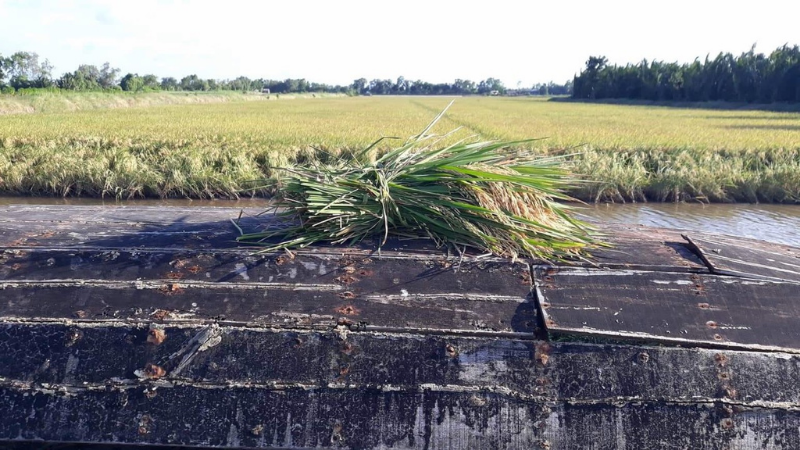Presenter: Vietnam Cooperative Alliance (VCA)
Case 2: Long Hiệp Agricultural Cooperative
Description
In recent years, climate change and salinity intrusion are a very serious problem affecting local agricultural production. Rainfall is predicted to increase, more intensive tropical storms occur, sea levels are expected to rise by 33 cm by 2050 and 1 meter by 2100. Such a rise will affect 5% of land area, 11% of population and 7% of agriculture. These are some of the impacts of climate change in the community:
- Less rainfall, less fresh water.
- Longer dry season, salt water penetrates into wide field.
- Cultivate 1 crop instead of 2 or 3 crops as before with low yield.
- Backward irrigation system.
- Lack of qualified seedlings.
- Lack of young people working in agricultural sector due to migration.
From the above situation, the cooperative orients its activities to both production and adaptation. The solutions have been implemented and adjusted in order to suit the farming characteristics and the situation of climate change and salinity intrusion. First, experimental production models have been initiated:
- One rice crop + one shrimp farming crop.
- One rice crop combined with shrimp farming + one crop of brackish water shrimp positive result (farmers’ income improved).
Cooperative’s responsibilities:
- Providing input materials and technical support to members, applied organic process.
- Providing salt-tolerant rice seeds with good quality by working with institutes and colleges.
- Marketing and sales 100% outputs for members.
- Investing rice processing and packaging system.
Results
- Support for input supply: fertilizers, pesticides for members; an average of over 70 tons of organic fertilizers/year (provided 100% for members and 30 hectares for neighboring households in the locality) with the payment method of end-of-season payment and cash payment.
- Output product support: Marketing and sale products for members with a price higher than the market price and support the transportation of products from members to the cooperative.
- Support for certification of organic production: the cooperative’s rice products are registered for protection under the name “Hat Ngoc Rong” (Dragon Rice Seed).
- The rice production capacity: 300 tons/year.
- Using organic fertilizers in production process, so it does not affect the environment.
- Improving farmer members’ income.
Climate smartness*
This story represents an integrative approach of different climate-smart practices that emphasize in increasing food security and adaptation capacity in context-specific realities. For this, the experimental approach plays an important role in providing agricultural solutions tailored to the socio-economic and environmental conditions of local communities. It is also relevant to mention that the climate-smart practices presented consider key value chain stages from input supply to marketing, that target the economic perspective by thriving to ensure fair selling prices which in turn benefit farmers´ income, and explore strategies to add value by providing certification to the final produce. Likewise, the use of organic inputs not only represent economic advantages for farmers but also involve the protection of agricultural and biological diversity, that is important to withstand climatic shocks and their negative impacts on the farm systems such as pest and diseases outbreaks. Transportation facilities for marketing and even the use of local organic inputs for plant nutrition entail co-benefits in reducing the GHG emissions across the value chain by making efficient use of fossil energy and minimizing the carbon emissions per unit of food produced. All these actions ultimately highlight the multiple opportunities that emerge from a committed and organized cooperative approach.
*This is done in the framework of climate-smart agriculture (CSA) approach. Climate-smartness in agriculture means understanding impacts of climate change and variability along with the agricultural activity, which includes the planning of what crop to plant, when to plant, what variety to plant and what type of management practices are needed to reduce the impact on the environment (e.g. emissions reduction), maintain or increase productivity (e.g. yields) while increasing resilience and improving livelihoods.


